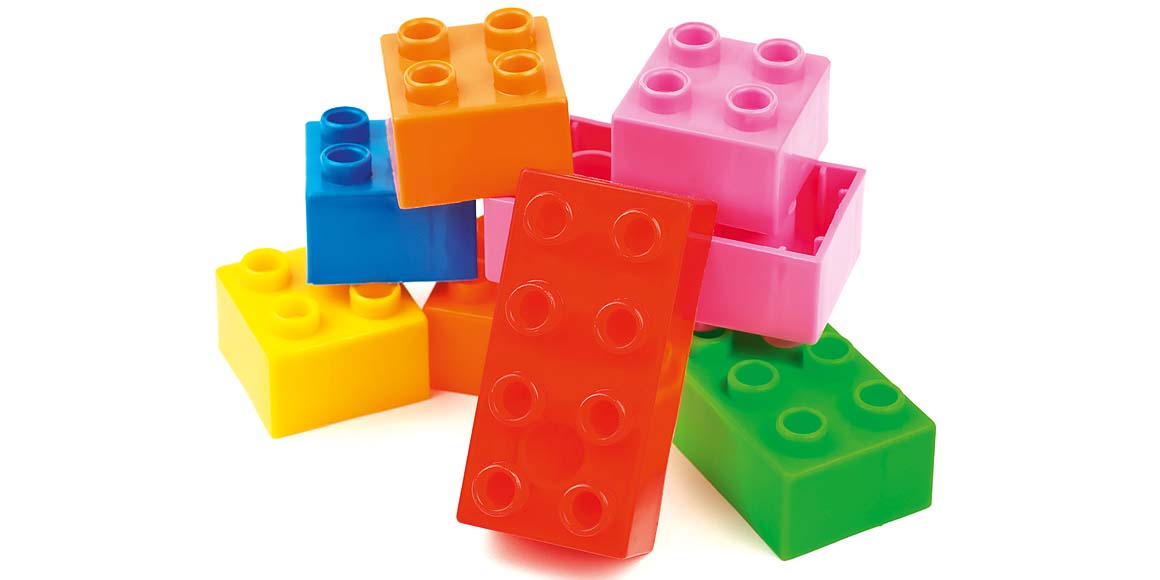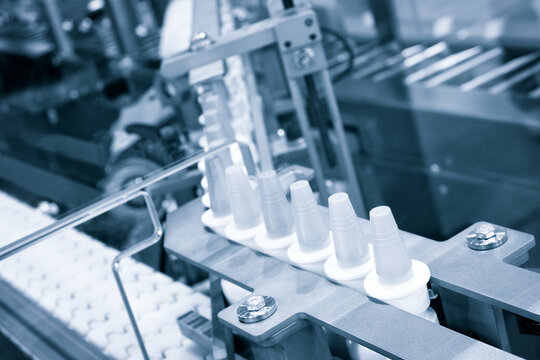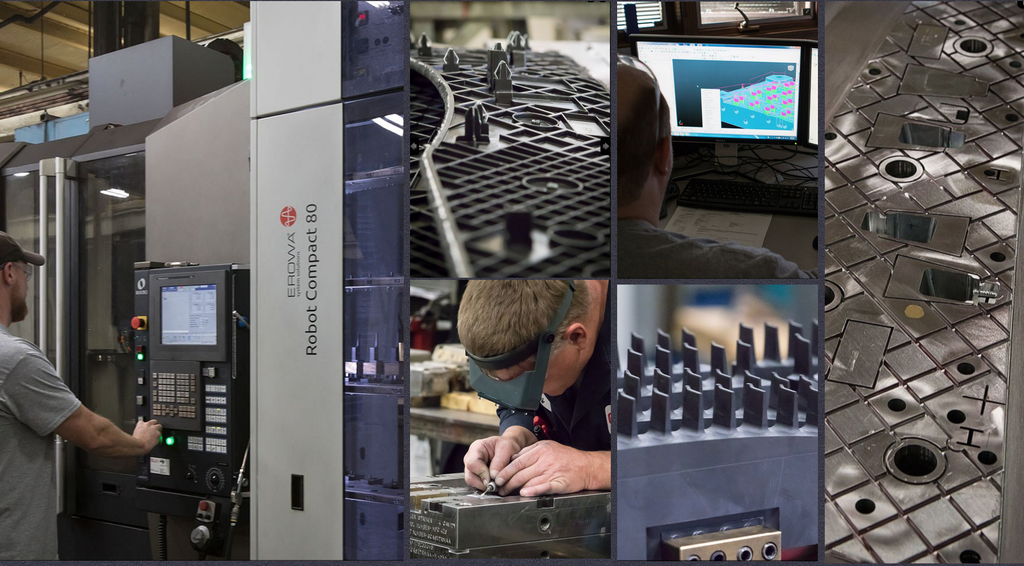The lifespan of an injection mold varies based on usage, maintenance, and materials but typically ranges from 100,000 to 1 million cycles.
Basic Understanding of Injection Mold
Definition and Purpose
Injection molding is a widely adopted manufacturing method where material, often plastic, is heated until it becomes molten, then is injected into a mold. The primary purpose of injection molding is to produce parts, often in high volumes, with high precision and efficiency. This process allows manufacturers to produce complex and detailed components with a high level of consistency and repeatability. It’s a prevalent method in various industries, such as automotive, medical, and consumer goods due to its cost-effectiveness when producing large quantities (typically over 1000 units), and its ability to maintain a relatively low per-unit cost of approximately $1 to $5 depending on the part complexity and material used.
Benefits and Limitations
- Advantages:
- Efficiency: High, as cycle times are typically between 15 and 60 seconds.
- Precision: Can achieve a high level of detail and complexity.
- Material Utilization: Can be optimized to minimize waste.
- Challenges:
Components and Structure
An injection mold comprises several crucial components, each playing a pivotal role in ensuring the effectiveness and functionality of the molding process.
Mold Base
The mold base houses all the other mold components and is usually made from a hardened steel, due to its ability to withstand high pressure. A typical mold base costs between $1,000 and $5,000, with variations depending on size and complexity.
Cavities and Cores
These determine the shape and size of the injected part. They must maintain a high level of precision and are often constructed from hardened steel or metal alloys to resist wear over time and prolong lifespan. Depending on their complexity and size, their production may require additional costs, often ranging between $2,000 and $50,000.
Sprue, Runners, and Gates
These components guide the molten material from the injection unit to the cavities. The design of runners and gates significantly affects the quality and appearance of the final product. Efficient design can also impact the speed at which the molding cycle can be completed, affecting overall production efficiency.
Ejection System
Ensuring a smooth ejection of the finalized part is crucial to maintaining a rapid production speed and minimizing damage to the part or the mold. The quality of the ejection system is vital in this aspect, and ensuring it functions optimally is essential for maintaining efficiency.
Different Types of Injection Molds
Injection molds can be categorized into various types, each serving a unique purpose and being suitable for specific applications.
Two-Plate Molds
These are the simplest type of molds which consist of two main sections, namely the injection and ejector halves. Two-plate molds are generally more economical, often used for simpler, less complex parts due to their limited design flexibility.
Three-Plate Molds
Offering more design flexibility than two-plate molds, three-plate molds utilize an additional plate, enabling more complex and intricate designs. They allow for the incorporation of multiple gates, but also bring a slightly higher cost due to their additional complexity, which typically starts from $5,000 depending on the specific requirements and materials used.
Hot Runner Molds
These molds integrate a hot runner system, maintaining the material in a molten state within the mold, thus allowing for faster cycle times and reduced material waste. The efficiency of hot runner molds is superior, but they come with a higher initial cost, often starting from $10,000.
Stack Molds
Stack molds essentially stack multiple mold cavities in a single mold structure, multiplying the production capacity per cycle and significantly enhancing output efficiency. The initial cost for stack molds tends to be high due to their complexity and the need for additional materials, with prices starting at approximately $20,000.
Factors Affecting Mold Lifespan
Material of the Mold
Metal Choices
Different metals possess distinct properties that impact the lifespan of a mold significantly. For instance, hardened steels, such as H13, can handle high-pressure situations and resist abrasion effectively. A mold made from H13 might cost between $20,000 and $50,000 but promises a lifespan that can produce upwards of a million parts if maintained correctly.
Coating Application
Surface coatings, like Titanium Nitride (TiN), enhance wear resistance, reducing the wear rate by approximately 30%, consequently extending the mold’s service life. Coating applications introduce an additional cost of around $2,000 to $5,000, but the investment pays off by enhancing durability and reducing maintenance frequency.
Design Complexity
Geometric Considerations
Complex geometric designs often entail intricate mold designs, which could potentially harbor areas prone to faster wear and tear. A complex mold might necessitate a higher upfront cost, potentially ranging from $50,000 to $100,000, due to the precision and additional time required in manufacturing.
Gate and Runner Design
The gate and runner design affect how smoothly and quickly the material flows into the cavities, impacting both the quality of the final product and the stress exerted on the mold. Optimal design, despite requiring additional time and resources to finalize, contributes positively to the mold’s longevity.
Maintenance Practices
Regular Checkups
Conducting routine mold checkups to identify wear or any misalignment early on prevents extended downtimes and costly repairs in the future. Scheduling maintenance every 10,000 cycles, depending on the complexity and usage of the mold, establishes a proactive approach towards maximizing mold lifespan.
Repair Techniques
Implementing spot-on, effective repair techniques, like laser welding (which might cost $50 to $100 per hour), ensures that the mold does not undergo further undue stress, preventing future issues and maintaining the quality of output.
Usage Frequency
Cycle Time
A mold running 24/7 experiences substantially more wear compared to one used sporadically. For instance, a mold utilized continuously, with a cycle time of 60 seconds, will reach 500,000 cycles within approximately 347 days, which could lead to noticeable wear depending on the material and maintenance.
Production Volume
High production volumes demand more from a mold in terms of speed and consistency. Ensuring that a mold can withstand these demands necessitates an investment in quality materials and design from the get-go, thereby affecting initial costs.
The nuanced complexities involved in managing and ensuring the extended lifespan of a mold rely heavily on considerations regarding material choices, design complexity, maintenance protocols, and usage frequency. The above-detailed considerations, while requiring attentive effort and potentially higher initial investments, cumulatively contribute towards not just maintaining, but oftentimes extending the expected lifespan of a mold, thereby ensuring sustained production quality and efficiency.

Material Considerations
The pivotal role of materials in injection molds cannot be overstated. Not only does the material directly influence the durability and functionality of the mold, but it also plays a crucial role in:
- Ensuring Dimensional Stability: The selected material must consistently uphold the desired shape and specifications throughout the entire production volume.
- Enduring Wear and Tear: With each production cycle, the mold undergoes mechanical stress, and the chosen material should resist degradation.
- Maintaining Cost-Efficiency: Striking a balance between material cost and the achieved mold lifespan is crucial to ensure economical production.
- Meeting Quality Standards: Ensuring the final product adheres to the requisite quality standards by minimizing defects and inconsistencies.
Common Materials Used in Injection Molds
Steel Variants
Steel stands out as a predominant material in mold-making due to its high durability and wear resistance. Varieties like P-20, H-13, and S-7 each bring along their own pros and cons. For instance, P-20 offers a blend of toughness and cost-efficiency, often costing between $10 and $50 per square foot, making it suitable for basic applications.
Aluminum
Aluminum molds generally promise a shorter lead time and lower initial costs, with prices usually lying between $5 and $15 per square foot. However, their susceptibility to wear means they’re usually relegated to lower-volume production applications.
Beryllium-Copper
This alloy is well-known for its impressive thermal conductivity. Beryllium-Copper alloys might come at a steeper price, sometimes reaching up to $100 per square foot, but their heat dissipation characteristics can prove invaluable in certain high-production applications.
Impact of Material on Lifespan
Wear Resistance
Wear resistance stands out as a key determinant in prolonging mold lifespan. While materials like H-13 steel might have a higher upfront cost, their resistance to abrasion directly correlates with a lengthened mold lifespan.
Thermal Stability
Materials, such as Beryllium-Copper, that ensure consistent thermal management minimize thermal stresses on the mold, thereby reducing the risk of warping and ensuring dimensional stability across numerous cycles.
Corrosion Resistance
Selecting a material that resists corrosive actions from the processed material or external factors minimizes maintenance requirements and safeguards the mold’s structural integrity over time.
Material Cost vs. Lifespan
Initial Investment
Materials such as P-20 steel might offer a lower initial investment, making them enticing for budget-restricted projects. The relatively low cost of approximately $10 to $50 per square foot sometimes masks the potential longer-term costs associated with increased maintenance and potentially shorter lifespan.
Ongoing Costs
Opting for more robust materials like H-13 steel may reduce the frequency of required maintenance, thereby saving on ongoing costs despite the initial higher expenditure, which might range from $20 to $100 per square foot.
ROI Calculation
Determining the ROI requires a comprehensive evaluation of initial costs, ongoing maintenance, and expected production volume. Balancing these factors to find a material that minimizes costs while maintaining production quality and efficiency is crucial.

Design and Manufacturing
Design Principles for Prolonged Lifespan
Prioritize Material Flow
Ensuring that the material flows smoothly through the mold is paramount. This involves considering aspects like gate locations and path ways, aiming to minimize stress and wear on the mold. Optimal flow design might add an additional 10-15% to the initial design cost, but the payback in terms of reduced wear and increased quality is substantial.
Build in Robustness
Incorporating a robust design, with adequate support and reinforcements, safeguards the mold against premature wear. This might mean that a mold could be 20% larger in dimensions to accommodate for additional supports, potentially increasing material costs, but simultaneously enhancing lifespan.
Simplify Where Possible
While complexity might be necessary for certain products, where possible, simplifying design reduces potential points of failure and wear. This simplification could potentially reduce design time by up to 30%, leading to faster turnarounds and lower initial costs.
Manufacturing Process and Techniques
Precision Machining
Utilizing high-precision machining, which may increase manufacturing cost by 15-25%, ensures that molds adhere strictly to design parameters, promoting consistency and reducing unforeseen wear and damage.
Application of Wear-Resistant Coatings
Applying coatings such as TiN can increase the mold’s resistance to wear by up to 40%. Even though this technique might elevate the initial cost by around $1,500 to $5,000, it significantly bolsters the mold’s lifespan and operational efficiency.
Optimize Cooling Channels
Ensuring that cooling channels are optimally placed and sized can reduce cycle times by up to 20%, enhancing production speed and minimizing thermal stress on the mold.
Ensuring Quality in Design and Manufacturing
Implement Rigorous Testing
Introducing rigorous testing protocols, which might extend the development phase by 2-3 weeks, is essential to iron out any design or manufacturing defects before mass production commences, thus safeguarding quality and efficiency.
Embrace Quality Assurance Practices
Incorporating Quality Assurance (QA) practices, such as statistical process control, despite increasing overhead costs by approximately 10%, safeguards the quality of the mold and the resulting products.
Utilize Advanced Measurement Techniques
Employing advanced measurement techniques, like 3D scanning, ensures that the manufactured mold adheres strictly to design specifications, although it can escalate the quality control cost by about 20%. This vigilance in measurement ensures consistency in production and prolongs mold lifespan by preventing unforeseen wear.
Maintenance and Repairs
Proper maintenance and adept repair of injection molds are pivotal to optimizing production efficiency, ensuring consistent product quality, and maximizing the lifespan of the tooling. A strategic approach to maintenance and repairs can shield you from unexpected downtimes and extend the utility of your investment in molds.
Regular Maintenance Practices
Adopt a Preventive Approach
Adopting a preventive maintenance strategy, although it might increase ongoing operational costs by approximately 15%, safeguards against abrupt breakdowns and ensures the mold consistently operates at peak efficiency.
Schedule Regular Checkups
Scheduling routine checkups, perhaps every 10,000 cycles, can identify potential issues before they escalate into major problems, thereby protecting against unscheduled downtime and potential damage to the mold or product quality.
Maintain a Detailed Maintenance Log
Keeping a detailed maintenance log, which requires diligent updating and might necessitate additional administrative hours, serves as a valuable tool for predicting potential issues and planning preemptive interventions.
Common Wear and Tear Issues
Erosion
Erosion typically manifests in areas of high-flow material movement and can cause dimensional inaccuracies in the produced parts. Recognizing and addressing erosion promptly is crucial to maintaining product quality.
Flash
Flash, or excess material, forming around the mold parting line, not only impacts the quality of the final product but also necessitates additional labor and time for removal, thus impeding efficiency.
Burn Marks
The appearance of burn marks on the final product typically indicates overheating or over-pressurization during the molding process and might necessitate a pause and recalibration of the process parameters.
Repair Techniques and Their Impact on Lifespan
Welding can be a viable technique for repairing defects or wear in the mold, though it may alter the material properties in the repair zone, potentially affecting lifespan. Welding repairs may increase production lead times by 5-10% due to the need for additional post-repair processing and validation.
Micro-TIG (Tungsten Inert Gas)
Utilizing micro-TIG welding provides a controlled approach for mold repairs, offering minimized HAZ (Heat Affected Zone) and less thermal stress, which can be pivotal in maintaining mold lifespan. The precision and minimized impact on the surrounding material make it a favored, albeit costlier by approximately 20-30%, option for critical and high-accuracy molds.
Laser Welding
Laser welding, while often more expensive, can provide extremely precise repairs with minimal thermal impact on the surrounding material. Employing laser welding might elevate repair costs by up to 40% compared to traditional welding but can be instrumental in preserving the original material properties and quality of the mold.
Regularly scheduled and meticulously documented maintenance, paired with adept and timely repairs, directly correlate with a mold’s operational efficiency, quality of output, and overall lifespan. Employing preventive measures and ensuring that wear and damage are promptly and appropriately addressed can vastly extend the utility and value derived from the mold across its operational life.

Quality Control
Quality control in the realm of injection molding not only ensures the final product meets designated specifications but also plays a crucial role in identifying potential issues before they become critical, thus indirectly influencing the lifespan and operational efficiency of the mold itself.
Implementing Quality Checks
Set Clear Quality Standards
Establishing clear and measurable quality standards ensures that every part produced adheres to the designated specifications and consumer expectations. This involves defining acceptable thresholds for parameters such as dimensional accuracy, material consistency, and visual aesthetics.
Utilize Appropriate Measurement Tools
Employing appropriate measurement and testing tools, which could involve an initial investment of $5,000 to $20,000 depending on the specificity and precision required, ensures the accurate and reliable assessment of each product against the set standards.
Implement Automated Inspection Systems
Integrating automated inspection systems, while often coming with a notable upfront cost that may range between $50,000 and $200,000, optimizes the inspection process by enhancing accuracy and efficiency, thereby reducing the manual labor required and minimizing the chances of human error.

Role of Quality Control in Ensuring Mold Lifespan
Early Identification of Mold Wear or Damage
Quality control helps in identifying variations in the product, which might indicate wear or damage to the mold, enabling early interventions and reducing the risk of producing a large quantity of defective products.
Optimization of Operating Parameters
Quality checks often involve assessing the consistency of material flow, cooling rates, and ejection mechanisms, which can indicate a need to optimize operating parameters and thereby, prevent undue stress on the mold.
Minimization of Wastage
Through ensuring each product meets the requisite quality standards, quality control reduces the production of defective parts, thereby minimizing wastage of materials and time, and extending the mold’s effective lifespan.
Addressing Issues Found During Quality Control
Immediate Pause and Analysis
Upon identification of a quality issue, operations should halt immediately, and a thorough analysis should ensue to ascertain the root cause, which may involve scrutiny of the mold, material, and processing parameters.
Implementing Corrective Measures
Once the root cause is identified, corrective measures, which might involve recalibration of machines, minor mold repairs, or alteration of material formulations, must be executed promptly to reinstate optimal production quality.
Revalidation of Processes
After initiating corrective measures, the processes need to be revalidated to ensure the rectifications are effective and that the output aligns seamlessly with the defined quality parameters, ensuring longevity and efficiency of the mold.
Quality control serves as the sentinel that safeguards not only the quality and consistency of each produced part but also oversees the well-being of the mold itself, ensuring any potential issues are addressed proactively, thereby enhancing the lifespan and reliability of the injection molding process.





